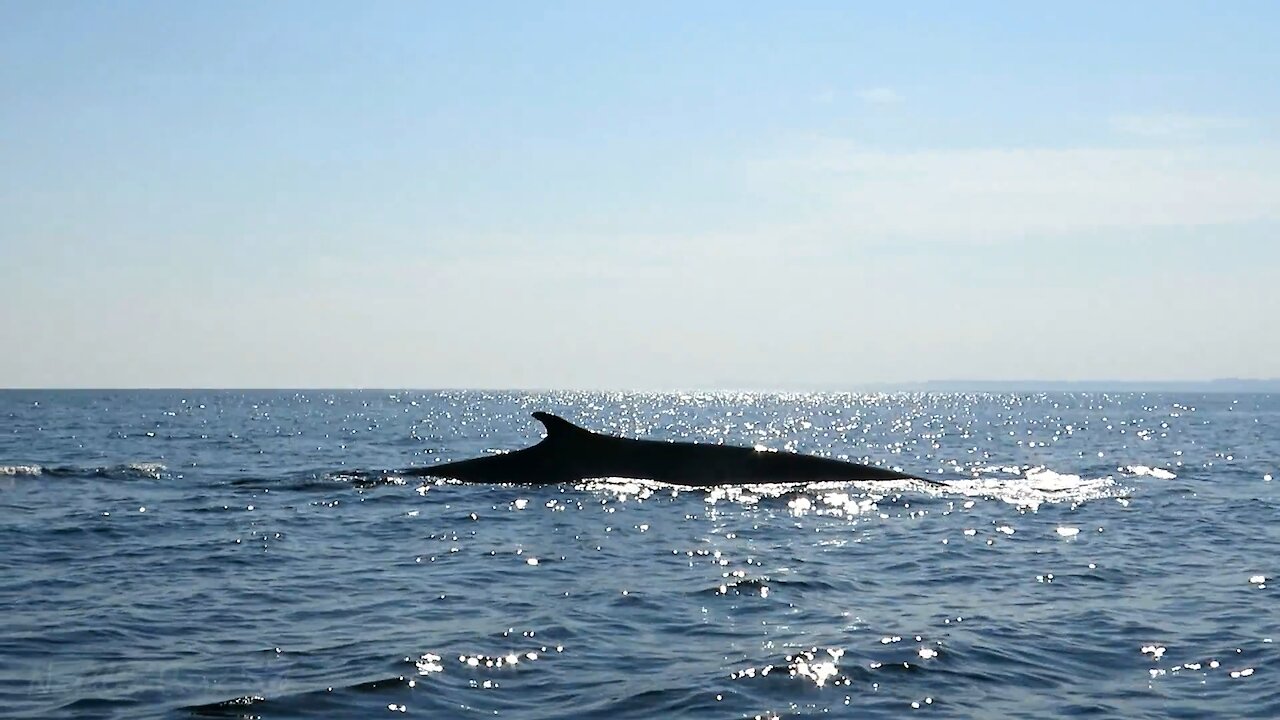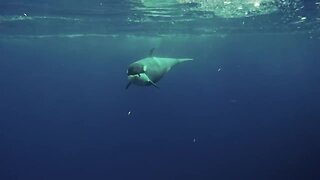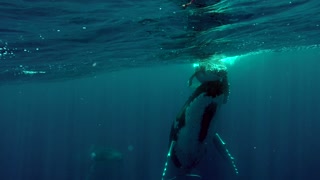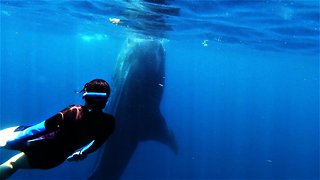Premium Only Content

Research boat has extremely close encounter with fin whale
This video was shot while researching the whales with the Mingan Island Cetacean Study (MICS), for conservation purposes. The motor was turned off, to avoid any accidents. They must be admired from a safe distance, and must not be approached.
The Fin Whale (Balaenoptera physalus), also known as Finback Whale and Common Rorqual, is the second largest whale in the world, and the second largest animal that has ever been recorded, reaching a length of 27.3 m (89.6 ft) and nearly 74 tonnes, although the average size in the Northern Hemisphere is about 18.5 m (61 ft) for adult males and 20 m (66 ft), for adult females, weighing 38.5 and 50.5 tonnes,respectively. In the Southern Hemisphere they are a bit larger, with males having and average length of 20.5 m (67 ft), and weighing 52.3 tonnes, and females being 22 m long (72 ft), and weighing 63 tonnes.
Fin Whales share the Balaenoptera genus with seven other extant species: the Blue Whale (Balaenoptera musculus), the Omura's Whale (Balaenoptera oomurai), the Bryde's Whale (Balaenoptera brydei), the Eden's Whale (Balaenoptera edeni), the Sei Whale (Balaenoptera borealis), the Common Minke Whale (Balaenoptera acutorostrata) and the Antarctic Minke Whale (Balaenoptera bonaerensis). These, along with the Humpback Whale (Megaptera novaeangliae), form the Balaenopteridae family, and are called Rorquals, the largest group of all baleen whales.
Fin Whales are found all over the world, but are rare in the tropics, preferring cold waters. They eat mainly crustaceans, but can sometimes prey heavily on fish.
Before the 19th century, Fin Whales were too hard to catch, but due to modern whaling, in the 20th century, they were depleted worldwide, until they were protected in the Southern Hemisphere and in the North Pacific in 1975. Boat strikes and by-catch are also threats to these beautiful giants of the sea.
-
 0:31
0:31
NataliaCara
2 years agoAdorable rescued Crab-eating Fox pup wants to catch what's making the weird noise
218 -
 1:08
1:08
Eisert
6 years ago $11.42 earnedAmazing close encounter with friendly killer whale
8.75K5 -
 1:03
1:03
ViralHog
5 years ago $0.93 earnedClose Encounter with a Hidden Saltwater Crocodile
4.05K2 -
 0:55
0:55
ViralHog
6 years ago $0.49 earnedA Rare Close Encounter With a Hyena
2.84K1 -
 0:36
0:36
buendia
5 years ago $12.60 earnedExtremely close orca encounter for kayaker in Northern Norway
139K2 -
 1:55
1:55
WideOpenSpaces
5 years agoClose Bowhunting Encounter with Deer Herd
346K1 -
 10:32
10:32
smoothcoffee
5 years ago $12.90 earnedExhilarating close swim with entire whale family
2.4K1 -
 2:32
2:32
ViralHog
5 years ago $0.63 earnedIncredibly Close Moose Encounter
2.68K4 -
 0:19
0:19
Nattyg
6 years ago $0.63 earnedCruisers Have Extremely Close Orca Encounter In Antarctica
2.46K1 -
 0:50
0:50
WildCreatures
5 years ago $2.09 earnedSwimmer Photo Bombs Beautiful Encounter With Whale Shark
3.6K